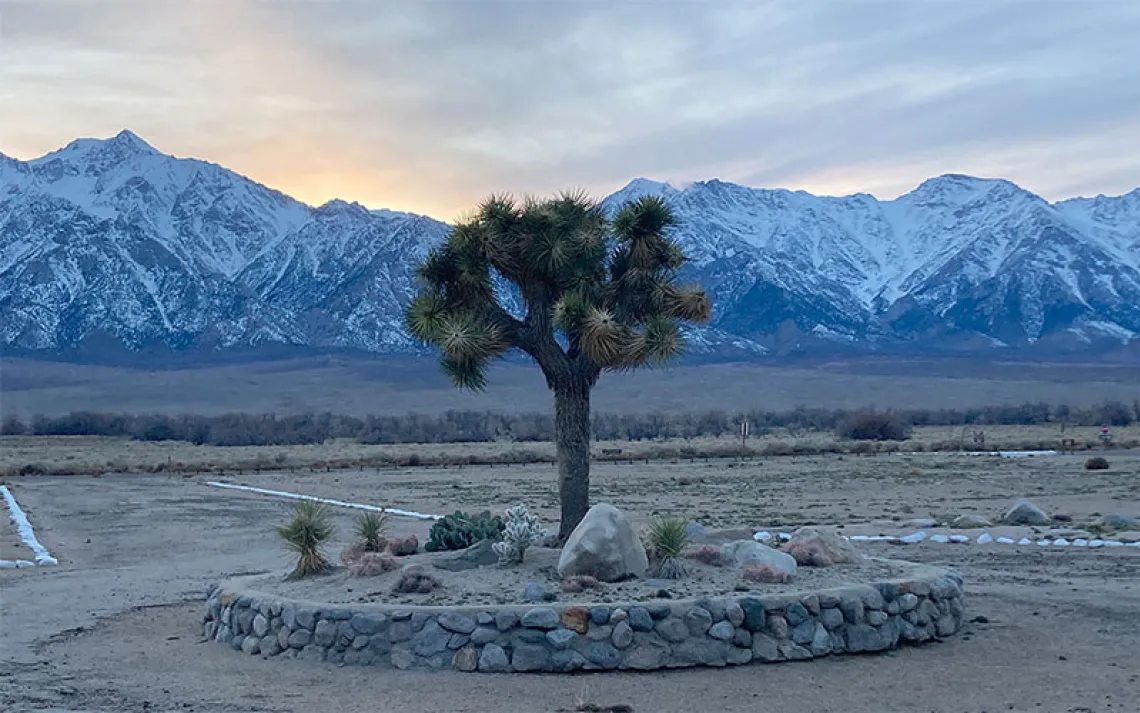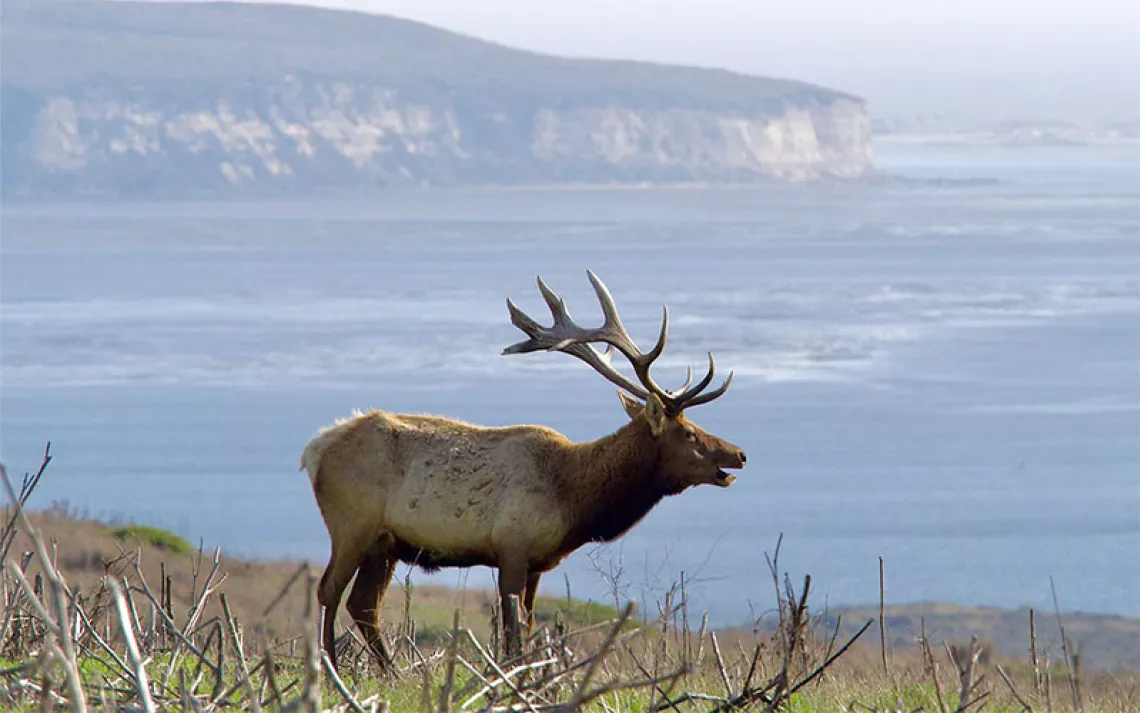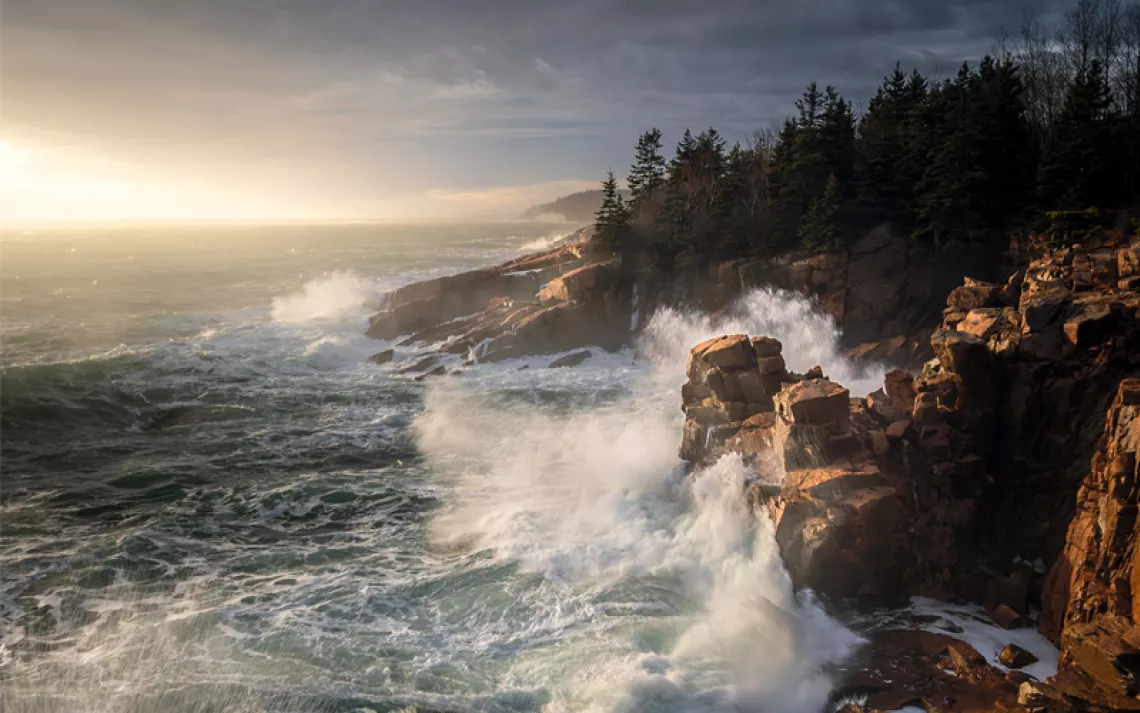Climate Triage for the National Parks
Park managers ponder what to save and what to let go

Shenandoah National Park could be as much as 5°F hotter by midcentury. Preserving it "unimpaired" is pretty much out the window. | Photo by Rachid Dahnoun/Tandem Stills + Motion
The Shenandoah salamander is a slippery beast, in habit as well as texture. "When people think about salamanders, their mind immediately goes to a stream somewhere," says ecologist Jim Schaberl. The Shenandoah variety, though, spends its life wriggling through the soil sandwiched in the rocky talus at the higher elevations of the eponymous national park, where Schaberl is the chief of natural and cultural resources. When it's cool enough, Schaberl says, the salamander emerges from the dirt to hunt insects.

Sign up to receive Sierra News & Views
Get articles like this one sent directly to your inbox weekly.
With this action you affirm you want to receive Sierra Club communications and may vote on policy designated by the Sierra Club Board.
Shenandoah National Park, which comprises more than 300 square miles of Virginia's Blue Ridge Mountains, is home to the world's entire supply of Shenandoah salamanders. Given the salamanders' secretive lives, it is difficult to know the exact extent of this supply, but scientists believe it is dwindling. In recent decades, the cloud bank that used to rest reliably upon the mountains' brow has lifted, and with it, the cool, moist conditions favored by amphibians. For park managers responsible for the endangered salamander's continued existence, this poses a problem. One solution might be irrigation, Schaberl says: "We could set up a sprinkler system."
Like most of the rest of the world, Shenandoah National Park is expected to heat up by 3° to 5°F by midcentury and even more so in the decades to follow if greenhouse gas emissions aren't capped. The fossil record shows that similar magnitudes of climate change completely rearranged life on Earth, shuffling ecosystems, species ranges, and abundances.
Climatic rearrangement, however, would conflict with preserving "unimpaired the natural and cultural resources and values of the national park system for the enjoyment, education, and inspiration of this and future generations," as the Park Service's mission statement has it. "When we see impairment," says Schaberl, "we're working our darndest to address that."
There's always been a bit of a gap between the Park Service's stated mission and reality. Years ago, it gave up on its view of the parks as a "vignette of primitive America," in the words of influential conservationist A. Starker Leopold. But which Shenandoah should the park managers seek to preserve? It could be the one that existed in the 1940s and '50s, before pollution from coal-fired power plants upwind doused the park with acid rain. Or the one from before the arrival of mile-a-minute, oriental bittersweet, wavyleaf basketgrass, and hundreds of other non-native species. What about the park as it was in the early 1900s, before chestnut blight killed off the eastern chestnut, until then the park's dominant tree? Or the one from the 1700s, before white settlers cleared many of the area's forests for farms and pastures? Or the one that existed before European colonists displaced the Cherokee, Monacan, Saponi, and Tutelo people who lived there?
The catastrophe of climate change challenges any kind of preservation, something a newly released Park Service policy acknowledges. The updated policy provides federal resource managers with a new framework to use in responding to global warming, offering three distinct strategies whose titles form an acronym of the type much favored by the federal government: RAD.
R stands for "resist.” In some instances, the policy advises, resource managers might try to maintain the current arrangement of species or ecosystems—by, say, watering the salamanders of Shenandoah.
A is for "accept." Most species and ecosystems have broader ranges and more complicated problems than hydrating Shenandoah salamanders. In many circumstances, parks will have no choice but to let climate change take its course. "My suspicion is that we'd have to do that on anything of scale," Schaberl admits.
D stands for "direct." In certain places, resource managers might be able to nudge species or ecosystems toward a desired outcome. Shenandoah's brook trout, for example, are threatened by rising water temperatures. Some of the trout streams are fed by groundwater and are likely to remain relatively cool in the future. Park managers might focus on protecting those streams. Eventually, they might even help brook trout colonize other suitable streams within the park.
Schaberl has worked for the Park Service for more than 30 years—first at Saratoga National Historical Park in upstate New York, then at Voyageurs National Park in Minnesota, then at Mount Rainier National Park in Washington, and finally at Shenandoah for the past 13 years. For him, the old ideal crumbled in the early 2010s, as the park experienced its hottest year, its driest year, and its wettest year and wildfires burned with new intensity. He welcomes the new RAD framework. "I think this guidance will help realign our thinking, to focus on things we can do and help us embrace the things that we cannot do and accept that," he says. "We can still have success. It's just that we can't save the parks the same way that they are now."
This article was underwritten by the Sierra Club Foundation.
This article appeared in the Fall quarterly edition with the headline "Which Shenandoah to Preserve?"
Take a Sierra Club trip to Shenandoah National Park. For details, see sc.org/outings.
 The Magazine of The Sierra Club
The Magazine of The Sierra Club



